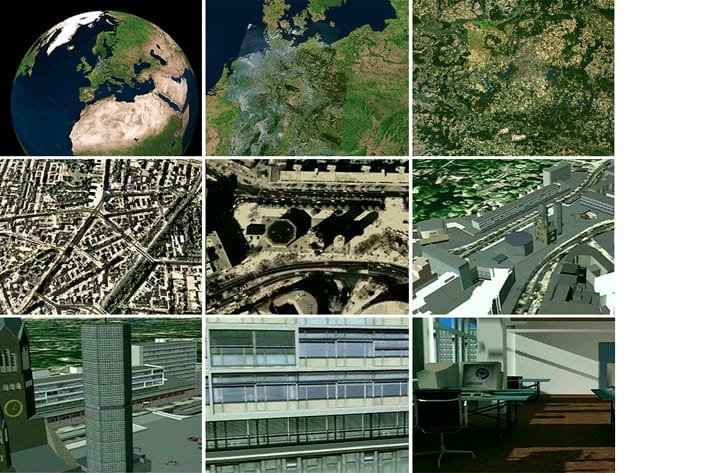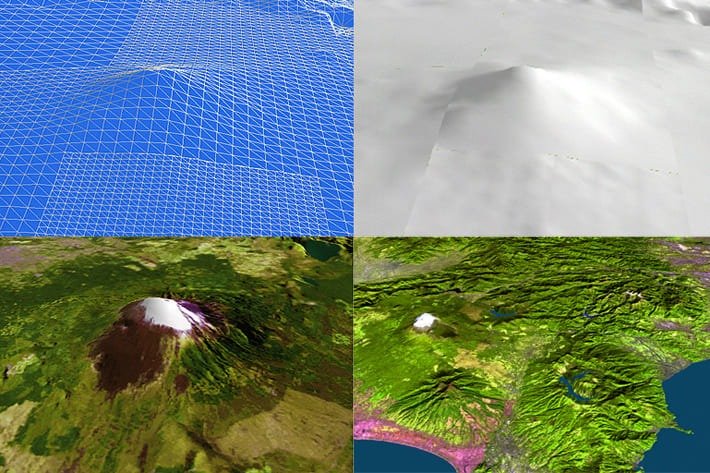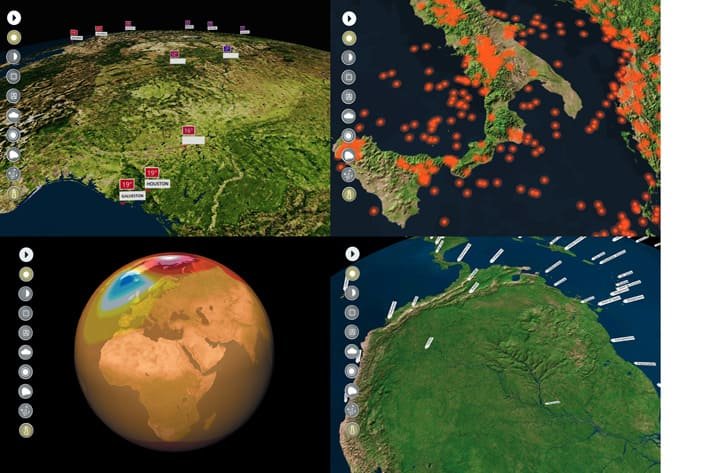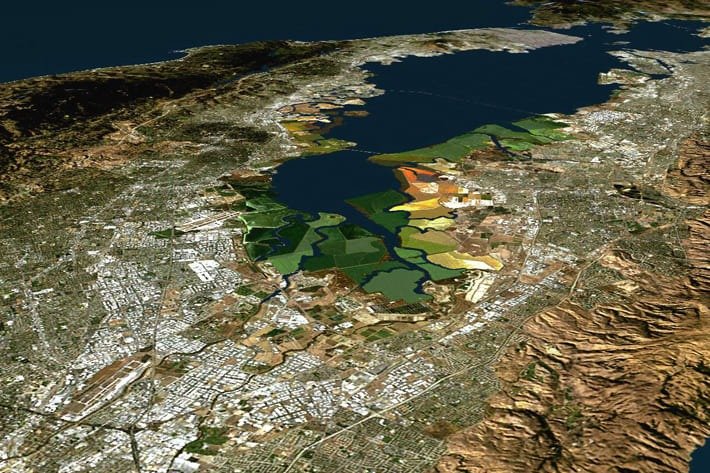
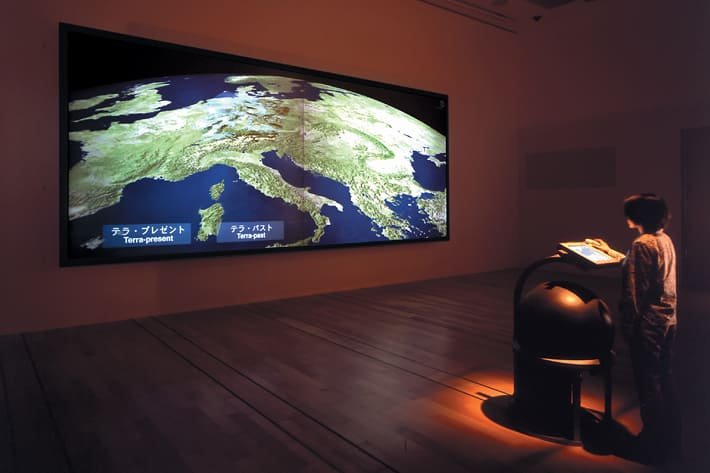
TerraVision | 1994
TerraVision es una representación virtual en red de la tierra basada en imágenes de satélite, tomas aéreas, datos de altitud y datos arquitectónicos. Sirve como un entorno para organizar y acceder a la información espacialmente. Los usuarios pueden navegar sin problemas desde vistas generales de la tierra hasta objetos detallados en calles y edificios. Además de la representación fotorrealista de la tierra, se integran todo tipo de información-datos espaciales. Incluso se ofrecen tomas aéreas históricas en el sistema. Esto permite a los usuarios navegar no solo espacialmente sino también a través del tiempo.
Todos los datos se distribuyen y se conectan en red y se transmiten al sistema de acuerdo con las necesidades del usuario. TerraVision fue el primer sistema en proporcionar una navegación y visualización fluidas en un entorno de datos espaciales enormemente grande y es una precuela de Google Earth.
Para navegar por estos datos, se diseñaron tres componentes centrales: una gran esfera que hace referencia al globo para pilotar el planeta; un ratón 3D para volar; y una pantalla táctil para interactuar con objetos en la tierra virtual.
TerraVision es un ejemplo temprano de un proyecto colaborativo cuyos usuarios contribuyeron colectivamente a completar una imagen más grande, en este caso, la de toda la tierra.
Estudios ART + COM | Netflix lanza miniserie sobre la invención de ART + COM TerraVision
El proyecto fue encargado en 1994 por Deutsche Telekom y realizado junto con mis amigos y colegas de ART + COM. Mención especial: Pavel Mayer, Axel Schmidt, Gerd Grueneis, Dirk Luesebrink, Hendrik Tramberend, Steffen Meschkat. según publicación de JOACHIM SAUTER
TerraVision | 1994
Además de te puede interesar


